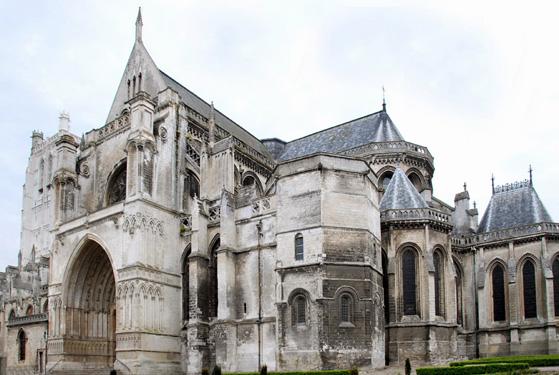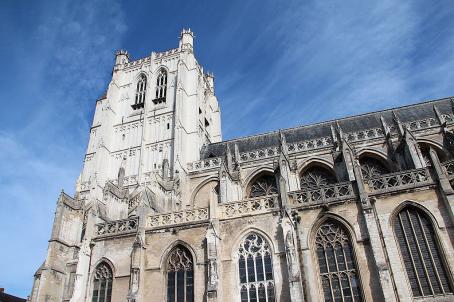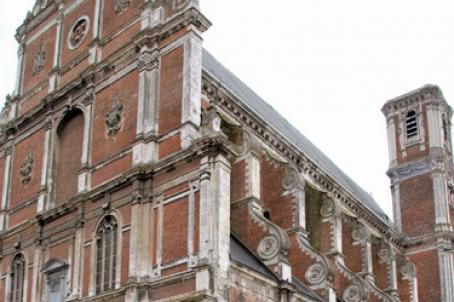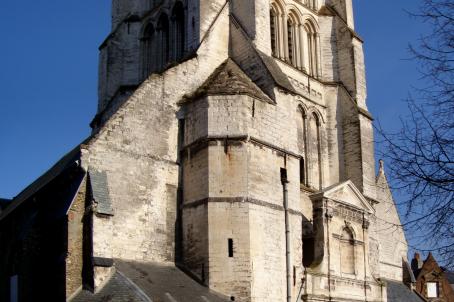Notre-Dame de Saint-Omer Church
Construction started in 1052. The work was not completed until 1486 with the erection of the spire of the transept crossing. The cathedral was closed to worship during the French Revolution: it was then transformed into a fodder store. Unlike many churches in France, it did not suffer from vandalism, looting or destruction.
About this building
It is a Romanesque style building, but after a long construction period, it presents various successive expressions of the Gothic style. Latin cross plan. Facade with a porch tower. Southern portal whose tympanum is the only one representing the Last Judgement in the North of France for the 13th century. The church has an exceptional treasure of about 600 pieces including an astrolabe clock (1558) and a descent of the Cross of Rubens.






